Abstract
Pigeons obtained food by responding in a discrete-trials two-choice probability-learning experiment involving temporal stimuli. A given response alternative, a left- or right-key peck, had 11 associated reinforcement probabilities within each session. Reinforcement probability for a choice was an increasing or a decreasing function of the time interval immediately preceding the choice. The 11 equiprobable temporal stimuli ranged from 1 to 11 sec in 1-sec classes. Preference tended to deviate from probability matching in the direction of maximizing; i.e., the percentage of choices of the preferred response alternative tended to exceed the probability of reinforcement for that alternative. This result was qualitatively consistent with probability-learning experiments using visual stimuli. The result is consistent with a molecular analysis of operant behavior and poses a difficulty for molar theories holding that local variations in reinforcement probability may safely be disregarded in the analysis of behavior maintained by operant paradigms.
Keywords: choice, local reinforcement probability, temporal stimuli, matching versus maximizing, pigeons
Full text
PDF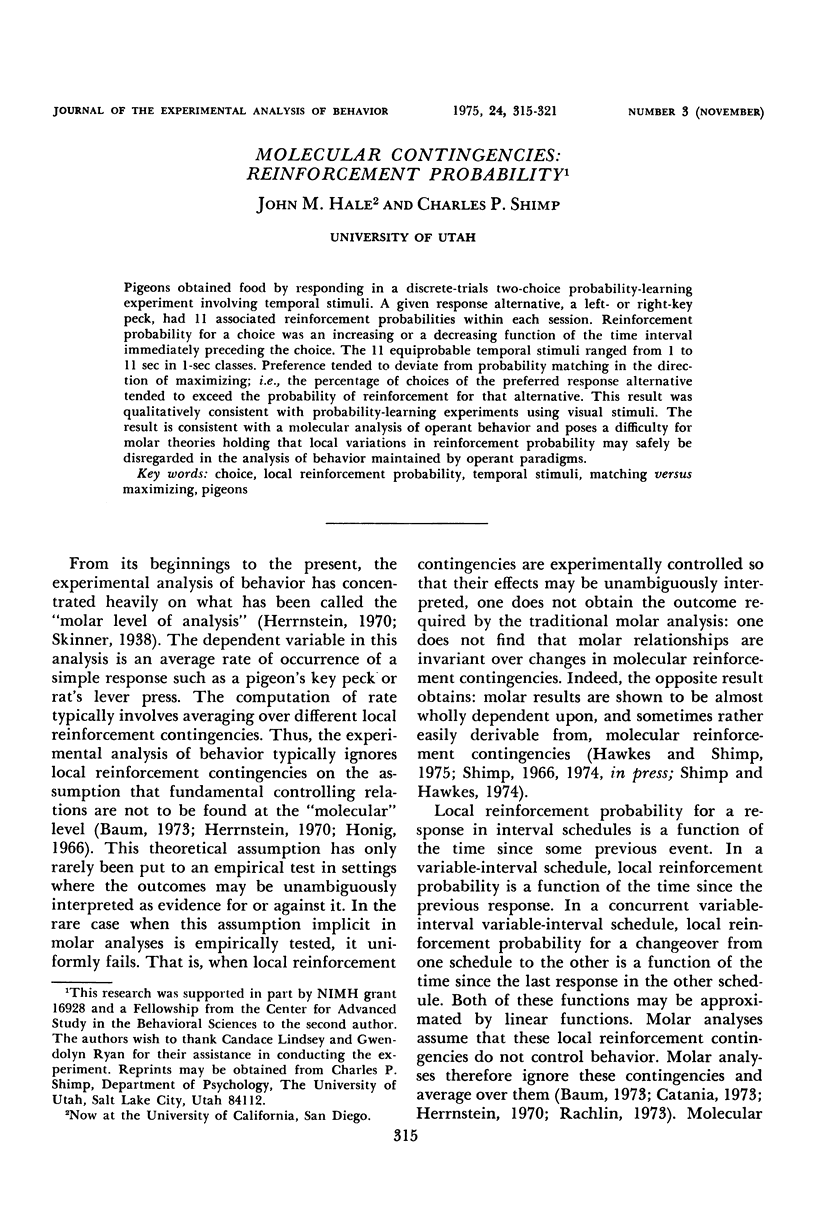
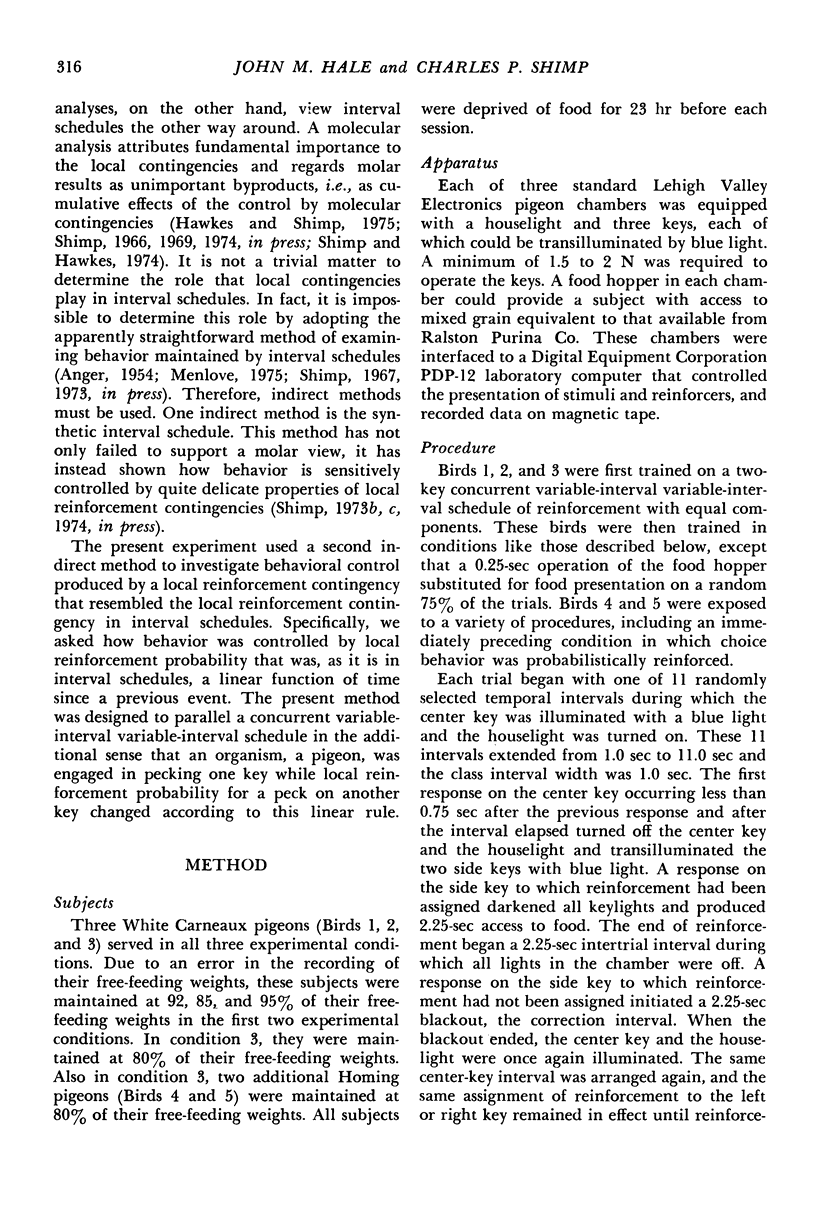
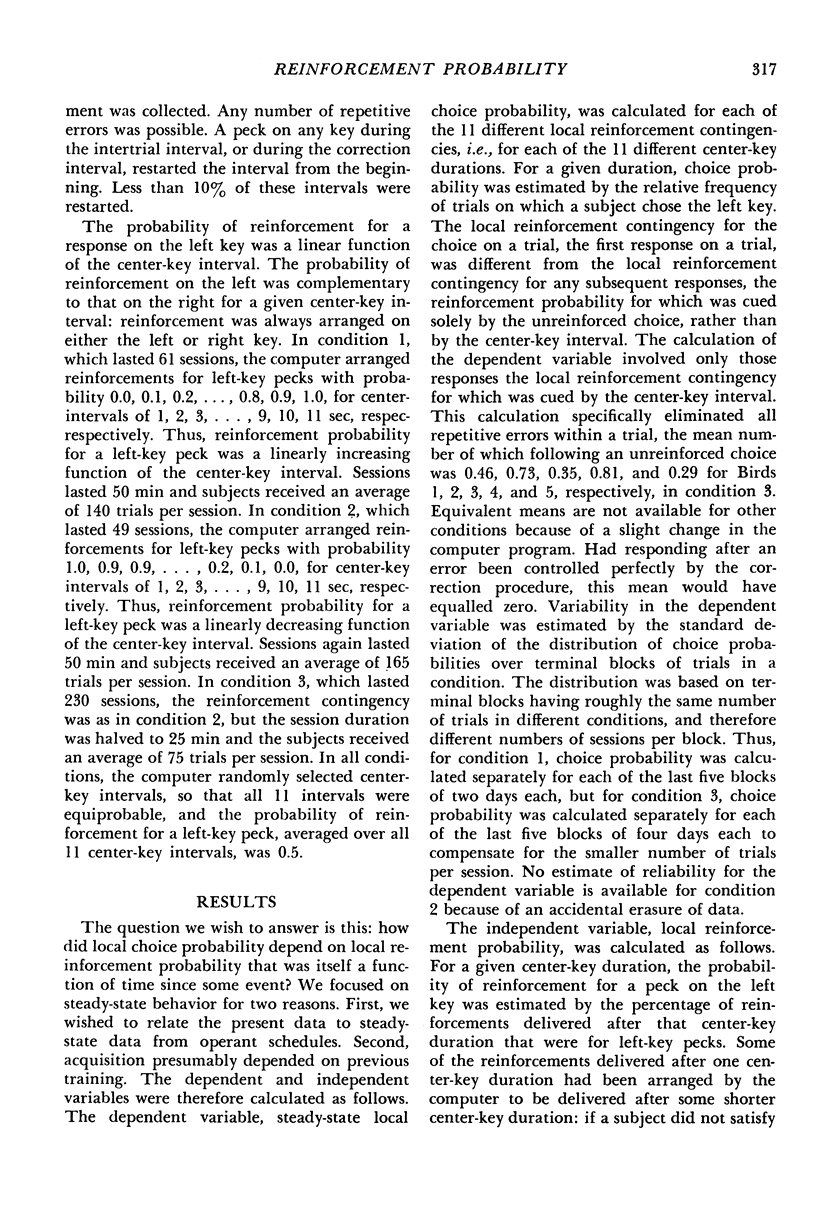
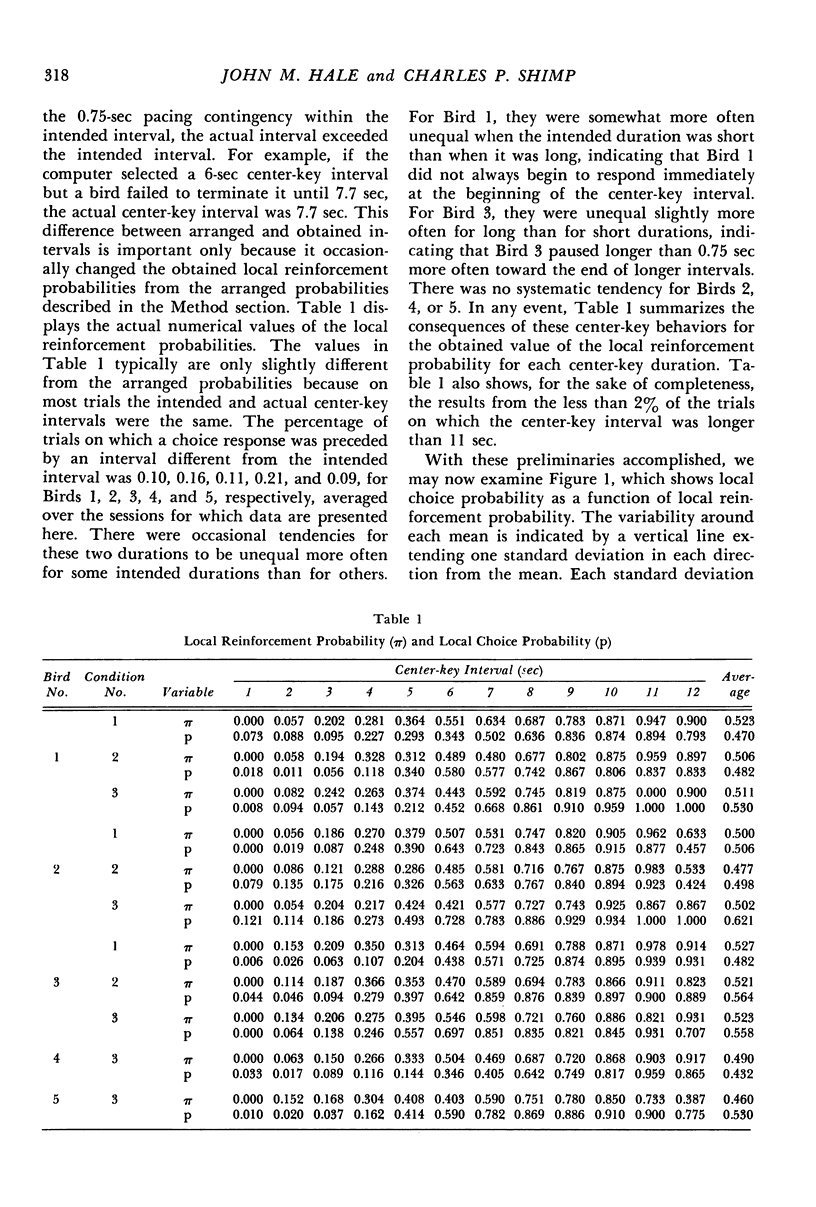
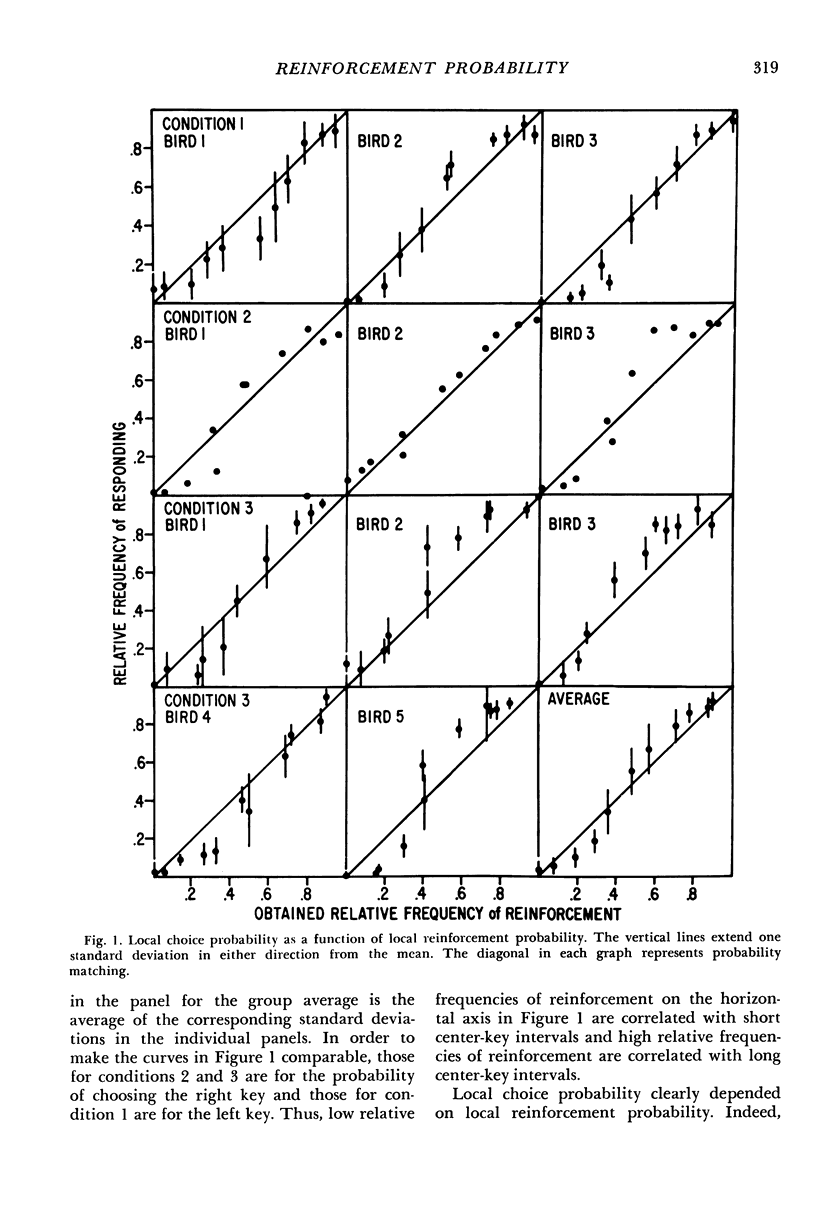
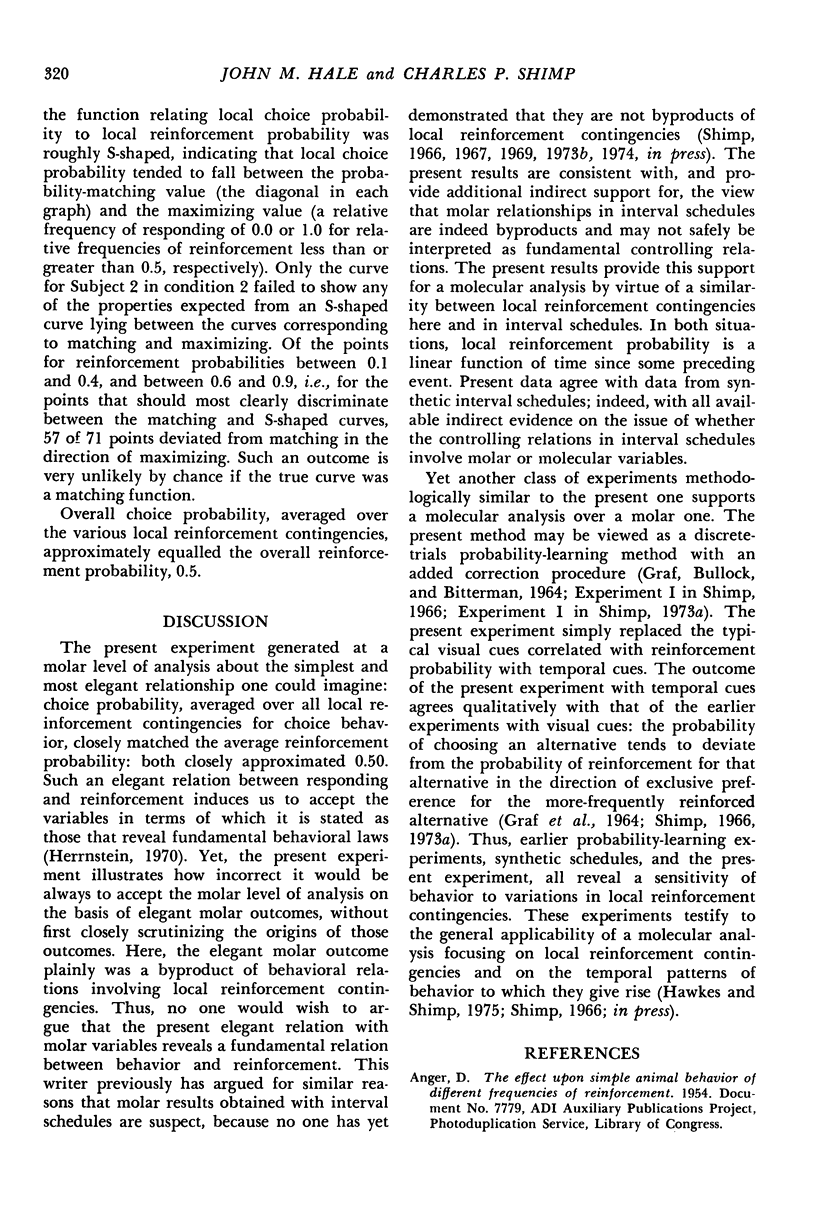
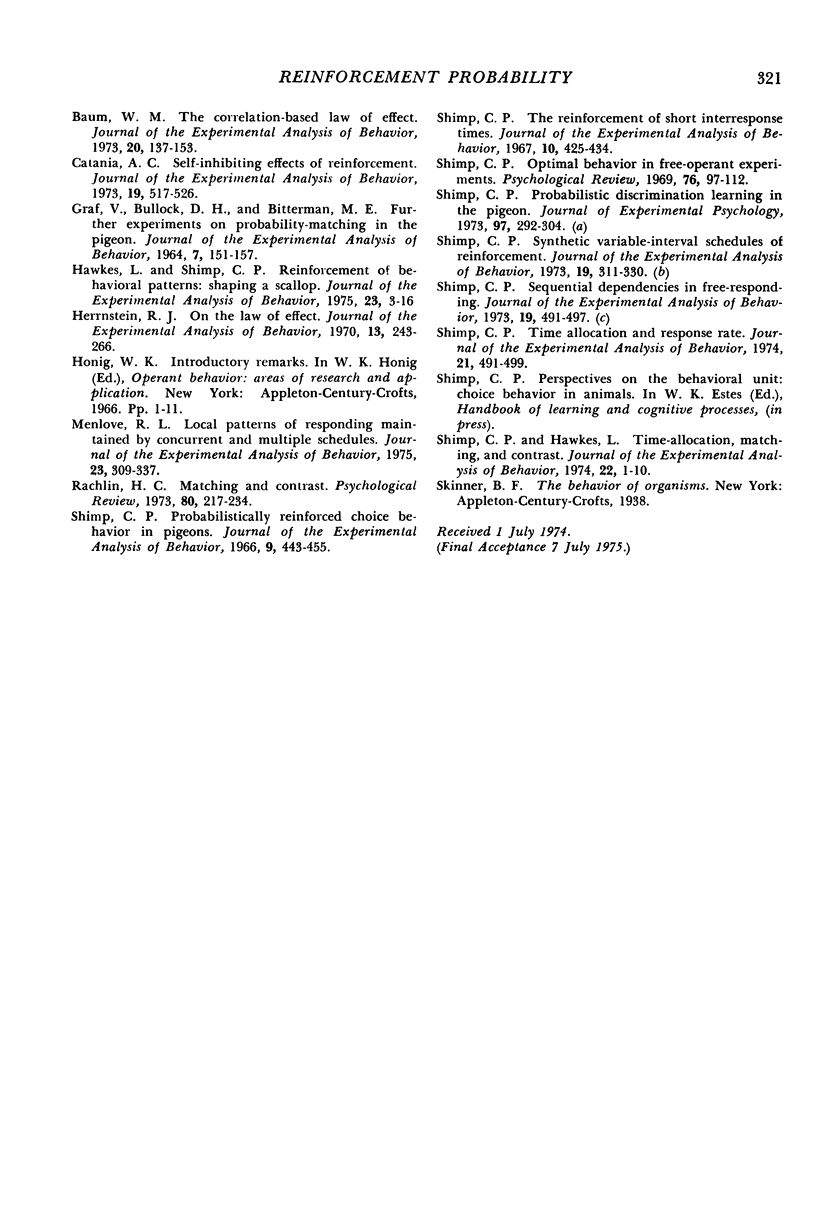
Selected References
These references are in PubMed. This may not be the complete list of references from this article.
- Baum W. M. The correlation-based law of effect. J Exp Anal Behav. 1973 Jul;20(1):137–153. doi: 10.1901/jeab.1973.20-137. [DOI] [PMC free article] [PubMed] [Google Scholar]
- Catania A. C. Self-inhibiting effects of reinforcement. J Exp Anal Behav. 1973 May;19(3):517–526. doi: 10.1901/jeab.1973.19-517. [DOI] [PMC free article] [PubMed] [Google Scholar]
- GRAF V., BULLOCK D. H., BITTERMAN M. E. FURTHER EXPERIMENTS ON PROBABILITY-MATCHING IN THE PIGEON. J Exp Anal Behav. 1964 Mar;7:151–157. doi: 10.1901/jeab.1964.7-151. [DOI] [PMC free article] [PubMed] [Google Scholar]
- Hawkes L., Shimp C. P. Reinforcement of behavioral patterns: shaping a scallop. J Exp Anal Behav. 1975 Jan;23(1):3–16. doi: 10.1901/jeab.1975.23-3. [DOI] [PMC free article] [PubMed] [Google Scholar]
- Herrnstein R. J. On the law of effect. J Exp Anal Behav. 1970 Mar;13(2):243–266. doi: 10.1901/jeab.1970.13-243. [DOI] [PMC free article] [PubMed] [Google Scholar]
- Menlove R. L. Local patterns of responding maintained by concurrent and multiple schedules. J Exp Anal Behav. 1975 May;23(3):309–337. doi: 10.1901/jeab.1975.23-309. [DOI] [PMC free article] [PubMed] [Google Scholar]
- Shimp C. P., Hawkes L. Time-allocation, matching, and contrast. J Exp Anal Behav. 1974 Jul;22(1):1–10. doi: 10.1901/jeab.1974.22-1. [DOI] [PMC free article] [PubMed] [Google Scholar]
- Shimp C. P. Probabilistically reinforced choice behavior in pigeons. J Exp Anal Behav. 1966 Jul;9(4):443–455. doi: 10.1901/jeab.1966.9-443. [DOI] [PMC free article] [PubMed] [Google Scholar]
- Shimp C. P. The reinforcement of short interresponse times. J Exp Anal Behav. 1967 Sep;10(5):425–434. doi: 10.1901/jeab.1967.10-425. [DOI] [PMC free article] [PubMed] [Google Scholar]
- Shimp C. P. Time allocation and response rate. J Exp Anal Behav. 1974 May;21(3):491–499. doi: 10.1901/jeab.1974.21-491. [DOI] [PMC free article] [PubMed] [Google Scholar]


